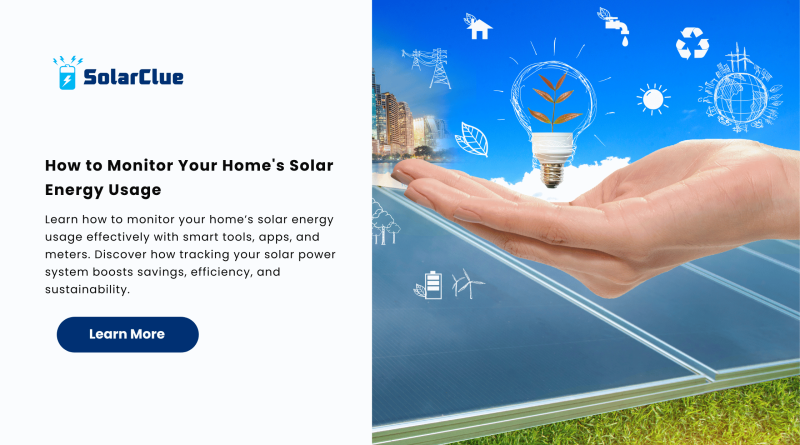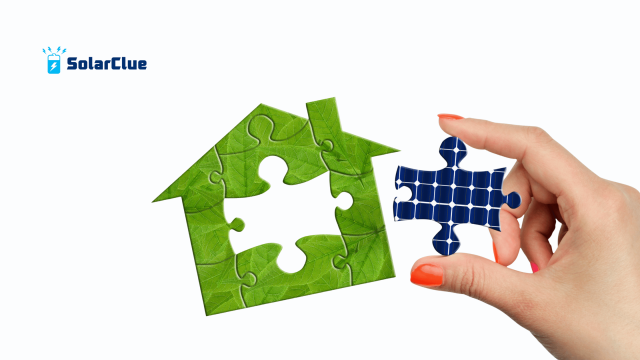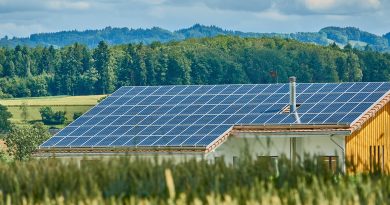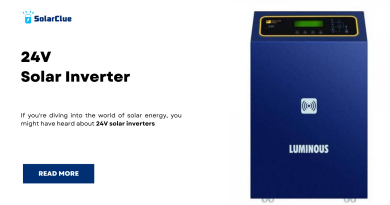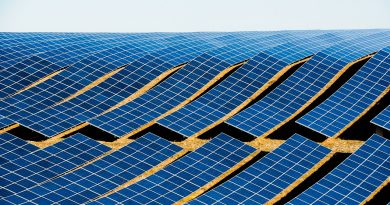How to Monitor Your Home’s Solar Energy Usage
Installing a solar power system is one of the smartest investments for homeowners today. It reduces electricity bills, cuts carbon emissions, and gives you energy independence. But owning solar panels is not just about installation; it’s equally about knowing how much solar energy your system is generating, how much your home is consuming, and where improvements can be made. Monitoring your home’s solar power usage ensures you maximize savings and system performance.
In this guide, you’ll learn why monitoring is important, the best tools and methods available, and how you can track your solar power system to make informed energy decisions.
Table of Contents
Why Monitoring Solar Energy Usage Matters
Keeping an eye on your solar energy production and consumption helps in several ways:
-
Maximizes savings: You’ll know when your panels generate the most electricity and adjust your usage accordingly.
-
Identifies inefficiencies: If your solar power system underperforms, monitoring alerts you early.
-
Tracks ROI: It helps you understand how quickly your investment pays back.
-
Supports sustainability: Monitoring shows how much traditional energy you’re offsetting with solar power.
Different Methods to Monitor Your Solar Power System
1. Inverter Display Monitoring
Every solar power system comes with an inverter that converts DC electricity into AC. Modern inverters often include a digital display showing:
-
Energy produced (daily, monthly, yearly)
-
Voltage and current levels
-
Real-time system performance
While basic, this is the first step to track your solar energy.
2. Solar Energy Monitoring Apps
Today, many systems come with mobile or web apps that provide detailed insights. These apps connect to your inverter or smart meter and offer:
-
Real-time solar power generation data
-
Usage comparison between peak and off-peak hours
-
Alerts for faults or dips in energy production
-
Historical data to analyze trends
Popular solar apps also allow remote monitoring, so you can check performance from anywhere.
3. Smart Meters and Net Metering
Smart meters and net metering policies allow you to track how much solar energy you send back to the grid. This gives you clear visibility of:
-
Energy consumed directly from panels
-
Energy exported to the grid
-
Energy drawn from the grid during low-sun hours
This balance helps optimize your consumption patterns for maximum cost savings.
4. Third-Party Energy Monitors
Besides inverter apps and smart meters, you can install independent energy monitors. These devices track both solar power generation and home electricity consumption. They provide detailed insights like:
-
Which appliances consume the most energy
-
Exact time-of-day usage trends
-
Comparison between solar and grid electricity
This level of detail helps you make smarter lifestyle and appliance-use choices.
Benefits of Tracking Solar Energy Usage
Optimize Energy Consumption
Monitoring reveals when your solar power system generates the most. For example, if peak generation happens between 10 AM and 2 PM, running washing machines, dishwashers, or charging EVs during this period reduces grid dependency.
Detect System Failures Early
If your solar power output suddenly dips, monitoring alerts you to check for issues like dirt on panels, shading, or inverter malfunctions. Quick action ensures consistent energy savings.
Improve Financial Returns
Knowing your consumption patterns helps you shift high-energy tasks to solar hours, reducing your electricity bills further and improving your payback period.
Environmental Impact Awareness
Tracking your solar energy use shows how much CO2 emissions you’ve avoided. It makes the environmental benefits tangible, motivating you to expand your solar power system further.
How to Start Monitoring Your Solar Power at Home
-
Check your inverter display daily for performance trends.
-
Download the manufacturer’s solar monitoring app and set up push notifications.
-
Request a smart meter from your utility provider if available under net metering.
-
Consider third-party energy monitoring devices if you want detailed appliance-level insights.
-
Regularly review monthly reports and compare them with your electricity bills.
Common Challenges and Solutions
-
Sudden drop in energy output: Could be shading, dust accumulation, or inverter faults. Regular inspection is key.
-
Data not syncing in apps: Ensure Wi-Fi connectivity and software updates.
-
Difficulty understanding reports: Look for simple, user-friendly dashboards or seek help from your installer.
Future of Solar Energy Monitoring
With AI and IoT integration, the future of solar energy monitoring looks even smarter. Soon, homeowners will get predictive analytics to forecast generation based on weather, AI-driven suggestions to reduce consumption, and voice assistant integration to check solar performance instantly.
FAQs
Q1. Why is it important to monitor my home’s solar energy usage?
Monitoring ensures your solar power system is working efficiently, helps maximize savings, and provides insights into your energy independence.
Q2. Can I monitor solar energy usage through my phone?
Yes, most inverters today come with companion apps that allow you to check real-time solar energy generation and usage from your smartphone.
Q3. How does net metering help in tracking energy usage?
Net metering shows the balance between the solar power you generate, consume, and send back to the grid, giving you a complete overview of your system’s performance.
Q4. What should I do if my solar system shows low performance?
Check for shading, dust, or technical faults. If the issue persists, contact your installer for a professional inspection.
Q5. Do I need third-party monitoring tools?
Not always. While inverter apps and smart meters are usually sufficient, third-party tools provide more detailed insights if you want deeper control over your consumption habits.
Conclusion
Monitoring your home’s solar energy usage is as important as installing the panels themselves. By leveraging inverter displays, mobile apps, smart meters, and third-party devices, you can ensure your solar power system works at peak efficiency, giving you maximum savings and sustainability benefits. Take charge of your energy future by tracking your solar power today and enjoy complete control over your home’s electricity consumption.
Want to explore more about solar products and solutions? Visit solarclue.com or dive into insightful guides on blog.solarclue.com to get started on your solar journey in the smartest way possible!

